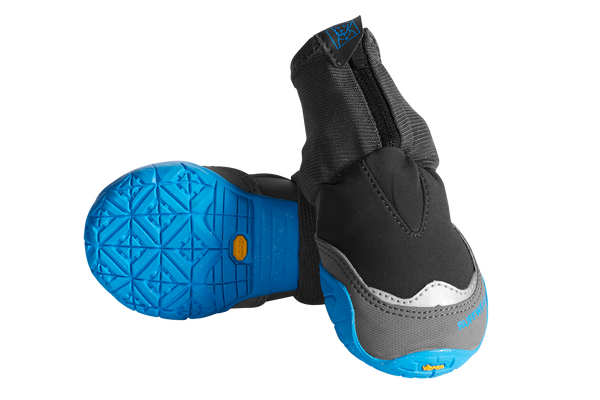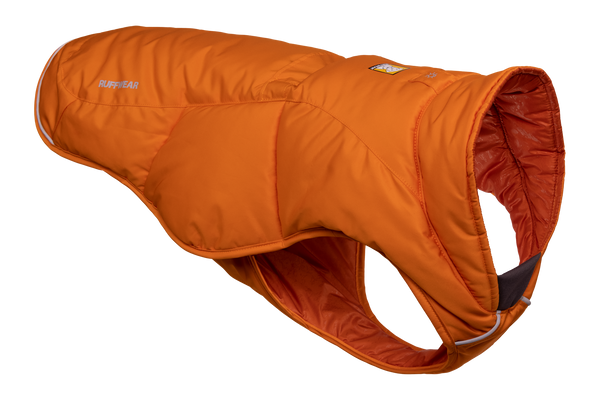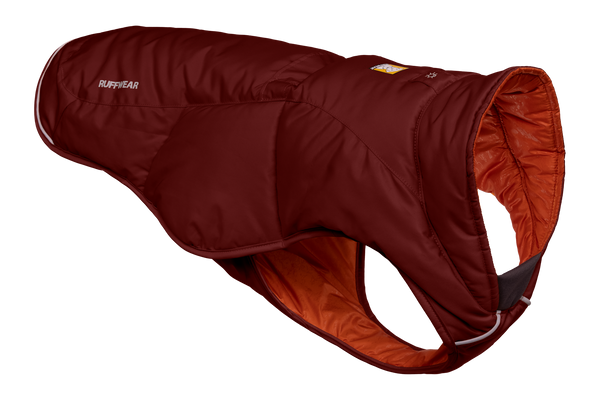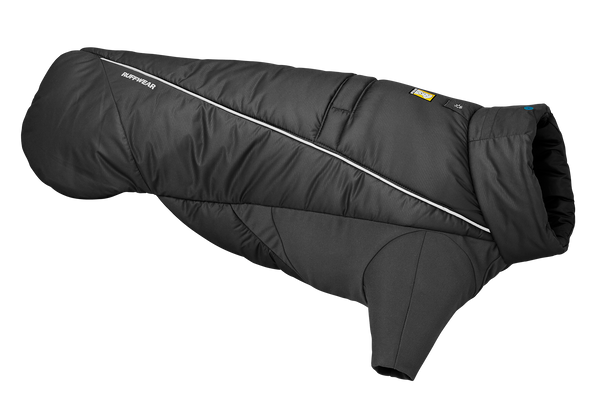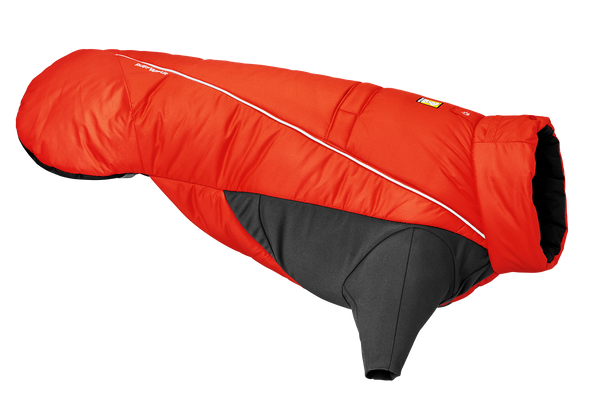Let's Go Find It: On the Job with Rogue Detection Dogs
“Let’s go find it.”
At those words, Skye is off.
It’s a gorgeous day on the job as a Rogue Detection Team. Skye is trekking along with her signature muscle trot, legs flexing, nose working overtime. Weaving back and forth with sloping arcs, searching for the scent she’s been trained and tasked to track down.
And everywhere Skye goes, Suzie is right behind. The terrain is often anything but forgiving – navigating through a landscape of downed trees, thick brush, rock-strewn stretches. Up a hill. Through a bog. Hand-over-foot grabbing at roots to get up a steep slope. But those four little paws move deftly ahead, and Suzie follows. Until –
Can you smell that?
Suzie spots the subtle looping path Skye’s tail traces through the air when Skye catches that initial whiff. Skye takes her time as she sets to work navigating her way through the “scent cone.” Her wide weaves narrow and gain momentum, entering almost a shark-like flow as she realizes she’s on to something good.
I can smell it.
Skye’s footing gets a little lighter. She meticulously inspects every trace of odor, checking not only the ground but also the air and the path the scent has traveled. She gets pulled deeper into the scent cone. And as she closes in, her head goes up as a cue to Suzie: “I got this. Watch.” And then –
Bingo.
Skye confidently makes her move and alerts Suzie to her find. She puts her nose to the scat and takes a step back very mater-of-factly, as if to say, “It’s over here. Come when you’re ready. I’ll be here.”
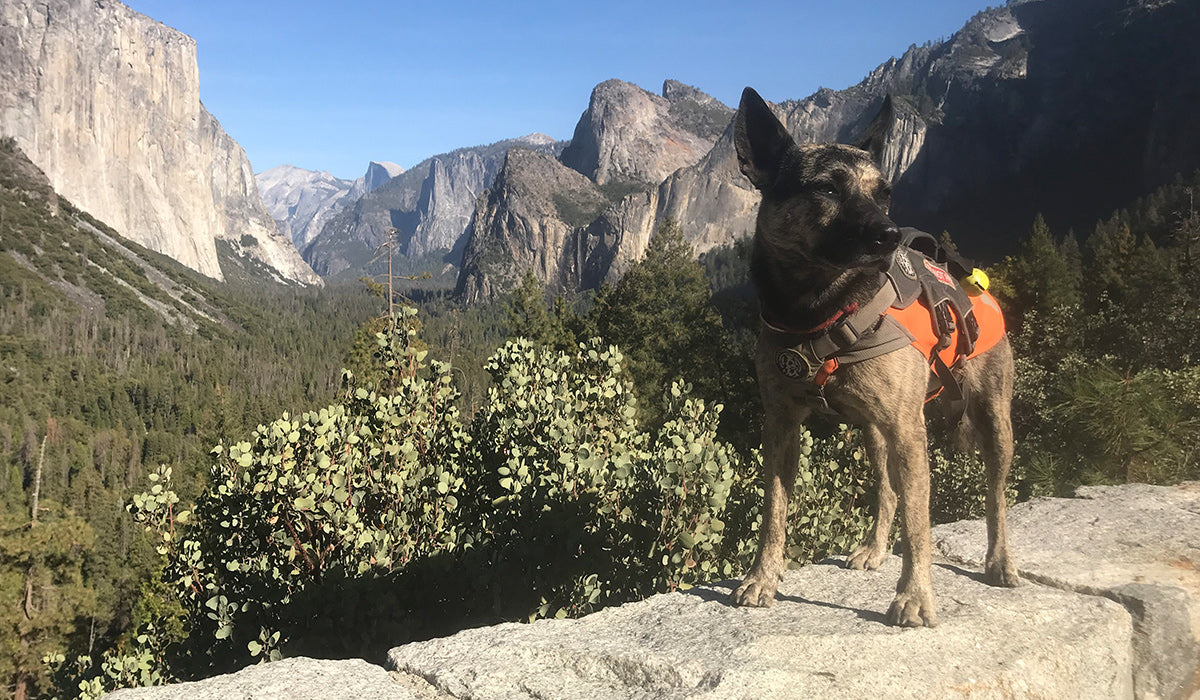
[Skye in Yosemite: Three Rogue Detection Teams – including Suzie & Skye – received special permits to survey and collect scat in Yosemite National Park in the summer of 2019. Story here.]
Suzie walks up to the mark where Skye waits patiently. When Suzie asks, Skye pinpoints again with her nose to the brown gold. And then BOOM – fun time. Suzie throws a Huck-a-Cone for Skye to chase and gnaw on as her reward. They do a couple of short tosses and tugs away from the scat as to not trample it. Skye gets to work flinging it around, rolling on it, and chewing it nearby while Suzie begins to collect data.
After some time, the sounds of Skye gnawing on the rubber toy dissipate into a short spell of silence. Then comes the sound. Not a bark, not a yelp – more of a whisper that gets Suzie to look up and see Skye giving her the “Hey, I know you're collecting data but can you throw this, because I need to chase it” look. With a little flick, Skye is off playing again, and Suzie gets back to the scat.
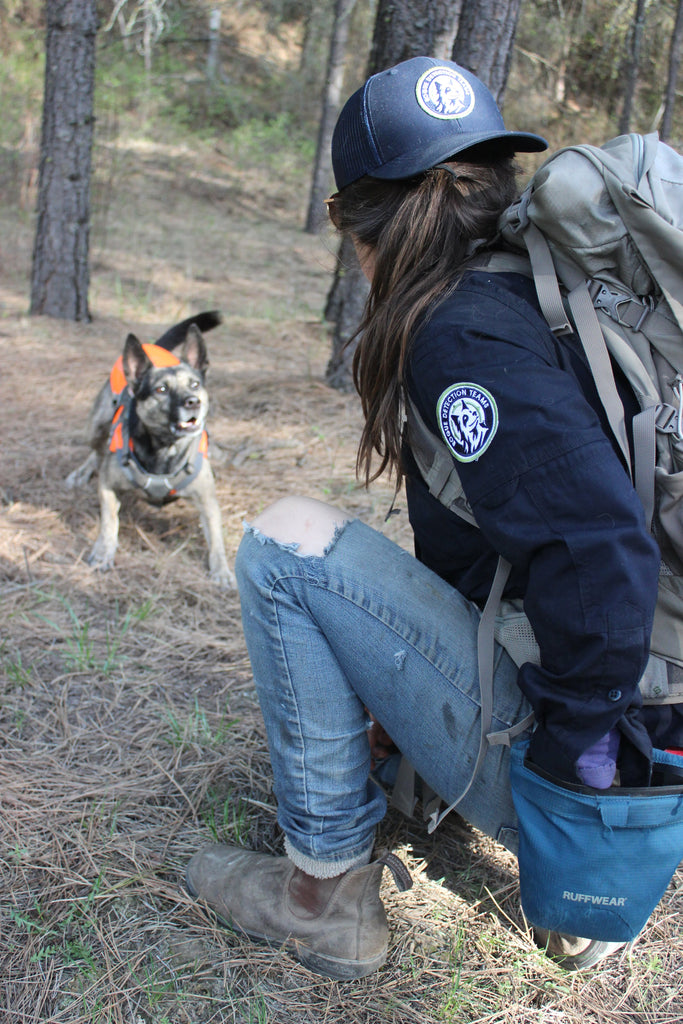
[Rogue Skye awaiting her reward for a successful search.]
This scat – and the hundreds (sometimes thousands) others collected throughout a survey – will help scientists identify behaviors and patterns of a specific species in a specific region. This scat is another clue at what this species has been eating, where they've been traveling, and how their interaction with the region might be changing.
These are the pivotal moments that happen countless times when Rogue Detection Teams are in the field. But just as remarkable as the moment Skye hits her mark are the countless hours of work, training, research, data, and more to get there.
Rogue Detection Teams bring the conservation detection dog method to the forefront of scientific research. They provide knowledgeable field teams and hands-on instruction for researchers, aspiring dog handlers, and citizen scientists, fostering collaboration and community involvement in the world of conservation.
Between the 19 detection dogs and 9 bounders (handlers), there is extensive experience in noninvasive surveys with the aid of rescued dogs turned conservation superheroes. Their work helps tackle some of the most pressing conservation concerns of today as they travel to wild spaces and places, working hard to conserve them, one non-invasive project at a time.
What does it take to be a scat detection dog?
First, there’s the dog’s natural ability (superpower, really) to sniff.
A dogs' sense of smell blows a human’s out of the water. It's 10,000 - 100,000 times as acute. One scientist explains, "Let's suppose they're just 10,000 times better. If you make the analogy to vision, what you and I can see at a third of a mile, a dog could see more than 3,000 miles away and still see as well." Or, if we can pick up on a teaspoon of sugar in our cup of coffee, a dog could pick up on it in a million gallons of water – that’s two olympic-sized pools.
To channel that natural ability into detection work, Rogue Detection Teams turn to the often overlooked, way-too-hyper, ball-obsessed dogs at shelters. Their intense, focused play drive makes it harder to find them a home compared to other dogs – but those same qualities are what make them prime candidates to learn scent detection. The ideal scat detection dog is intensely focused and has an insatiable urge to play.
That focus and energy is channeled as a reward for detection work. Think: “Will work for ball.”
They are happy to work all day traversing plains, climbing up mountains, trekking through snow, and clambering over rocks and fallen trees, all with the expectation of reward – playing with their ball – after successfully locating wildlife scat.
"Rescuing hard-to-home and high-drive dogs for the work we do is the best journey; with patience (and hours of fetch), we can discover their true personalities and perceptiveness. Combine that newfound intuition with a biological target, such as orca scat or an invasive plant, and the dogs follow their nose to some incredible sources of data for science. Whether the target is in a tree, floating on water or buried in dirt, our adventure-seeking teams love the thrill of these treasure hunts, getting muddy and constantly following their nose to help biologists make better conservation-minded decisions." Suzie, Rogue Detection Dogs
The dogs are incredible, but you have to pair them with the right human that can help the dogs reach their full potential. What makes a good bounder? Passion is a good place to start. Whether it's crawling through crud or discovering how to communicate something new to the dog that they're looking for, bounders have to get creative and be flexible. They encourage the dog to follow their natural instinct to explore, just with a certain species/scent in mind.
It's the bond between the dog and bounder that acts as the secret sauce to getting this truly scientific work done. They travel around the globe to sniff out data and help answer important conservation questions. Their resume includes 40+ (and counting) odors they can detect and 10 countries around the globe they've explored.
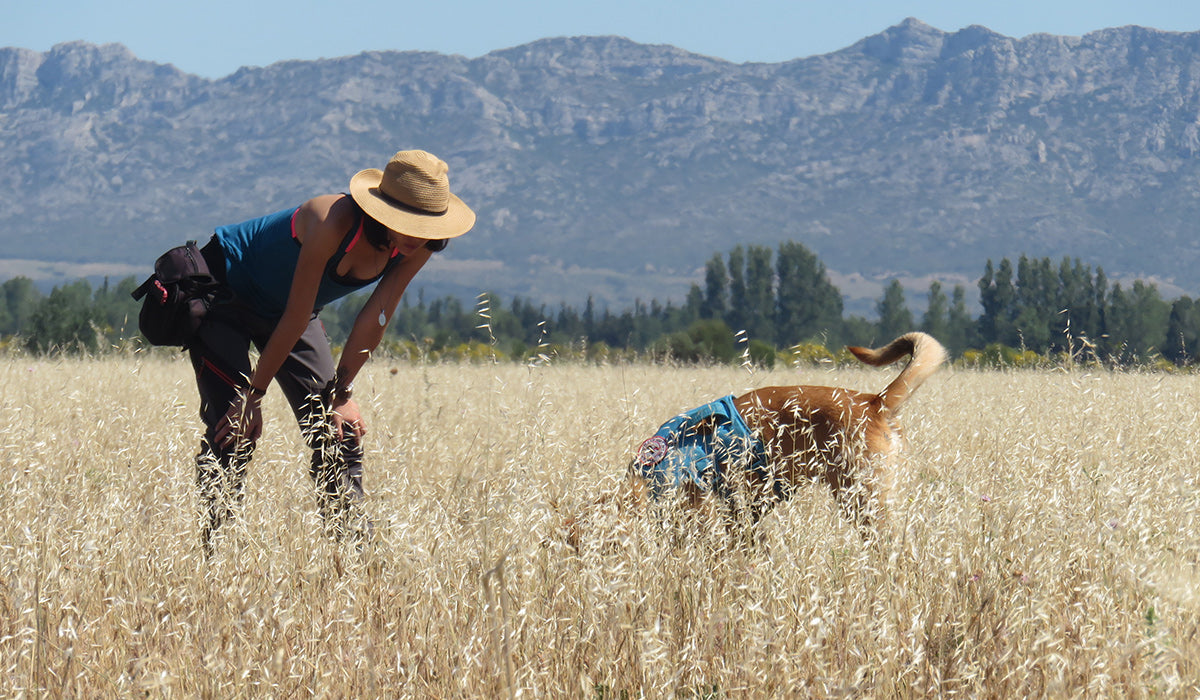
[Bounder Rita Santos and Rogue Hera sniffing for an endangered grasshopper which lives only on the Crau plains in the South of France. Photo credit: Rogue Detection Dogs]
Not only are we seriously impressed by the work these canine and human detection teams do, but Ruffwear also proudly supports Rogue Detection Teams by providing gear to all of the dogs. From harnesses and boots to toys, bowls, and cooling gear – they put our gear to the test in the harshest environments for days or even weeks at a time. They provide valuable feedback to our product development team. When we hear the gear passes the test for these hard-working dogs, we feel confident knowing, "If it works for them, it'll work for just about everyone else."
To learn more about Rogue Detection Teams and the work they do, check out their website here and follow them on Facebook, Instagram, and Twitter.








